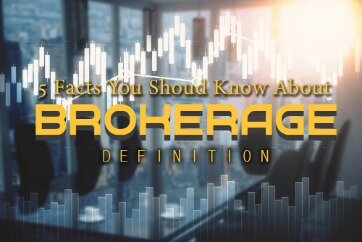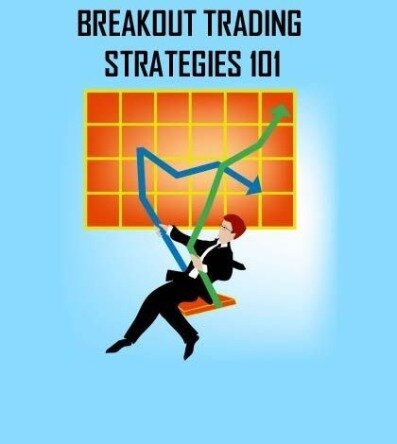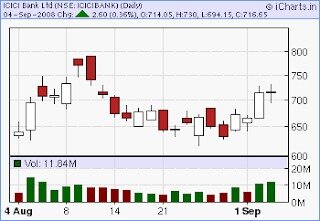19 Chart Patterns PDF Guide
альпари форекс: Альпари Форекс журнал для предпринимателей Inc Russia
20 de agosto de 202019 Chart Patterns PDF Guide
Contents:


The fifth and last day of the pattern is another long white day. A bullish harami cross occurs in a downtrend, where a down candle is followed by a doji. It is identified by the last candle in the pattern opening below the previous day’s small real body. The last candle closes deep into the real body of the candle two days prior. The pattern shows a stalling of the buyers and then the sellers taking control.
- With bulls having established some control, the price could head higher.
- When I started stock trading over 20 years ago, I would look at over one thousand stock charts each week.
- Some patterns are best used in a bullish market, and others are best used when a market is bearish.
- To help you get to grips with them, here are 10 chart patterns every trader needs to know.
- There are three types of patterns — breakouts, reversals, and continuations.
Beginners should first understand why technical analysis works as a window into market psychology to identify opportunities to profit. The bullish harami is the opposite of the upside down bearish harami. A downtrend is in play, and a small real body occurs inside the large real body of the previous day.
A diamond pattern is a reversal and continuation chart pattern in which price forms a structure of diamond on the chart. Two market patterns combine to make a diamond pattern. Usually, a breakaway gap happens after a triangle or flag pattern.
This creates buying pressure for the investor due to potential continued price appreciation. Head and shoulders is a chart pattern in which a large peak has a slightly smaller peak on either side of it. Traders look at head and shoulders patterns to predict a bullish-to-bearish reversal. On the other hand, if the support and resistance lines appear to be heading upward, this wedge can represent a potential downward price trajectory.
Volume jumps on increasing volume as BIIB surges out of its base, buy point $60.40, to claim fresh all-time highs. This time it was at $73 a share and the third push was the one to claim higher highs. To help drive the concept home, here’s another example of basic support and resistance. In summary, when you think of distribution days, think of the word “distribute”, or selling, or heck, the color red. With a distribution day, there is simply more net sellers than buyers.
The falling wedge has a series of lower highs and lower lows, but the lower lows are less pronounced than the lower highs, creating more of a wedge than a triangle shape. For example, the price of Bitcoin has been steadily increasing. Chart patterns can indicate whether this rising price trend is about to switch course and start going down or continue in the same direction. The positioning of the two candlesticks is important. The second-day candlestick must have an opening lower than the first-day bearish candle.
Find new trade ideas
The https://trading-market.org/ line signifies the overall uptrend of the pattern, while the horizontal line indicates the historic level of resistance for that particular asset. If the increased buying continues, it will drive the price back up towards a level of resistance as demand begins to increase relative to supply. Once a price breaks through a level of resistance, it may become a level of support.
- Find a broker that can help you execute your plan affordably while also providing a trading platform with the right suite of tools you’ll need.
- I believe in technical analysis and feel that chart patterns are a very powerful tool.
- Different stocks or contracts may also require different parameter choices—in this case, different moving averages like a 15-day and 50-day moving average.
- Traders may require different levels of functionality depending on their strategy.
- These are traditional chart patterns,harmonic patterns and candlestick patterns .
For example, Steve Nison, author of theJapanese Candlestick Charting Techniquestrading book, suggests there are hundreds of chart patterns. However, traders regularly use fewer chart patterns than that, with over 40 more commonly used and recognized stock patterns, which can be simple and more complex ones. In addition, some traders use only specific stock chart patterns, while others use a variety, and each investor finds what works best with their trading strategy. The patterns are created by drawing trendlines that join a series of descending highs or ascending lows .
Symmetrical triangle chart pattern
While a price pattern is forming, there is no way to tell if the trend will continue or reverse. As such, careful attention must be placed on the trendlines used to draw the price pattern and whether the price breaks above or below the continuation zone. Technical analysts typically recommend assuming a trend will continue until it is confirmed that it has reversed. There are many patterns used by traders—here is how patterns are made and some of the most popular ones.
As mentioned, the downtrend causes buyers to drive the price higher, which should be above 50% of the first-day candlestick. When there is a bearish Harami candlestick present in the market, this may suggest a potential downward price reversal in the near future. A bullish candlestick pattern is a useful tool because it may motivate investors to enter a long position to capitalize on the suggested upward movement. Also, wedges differ from pennants because a wedge is always ascending or descending, while a pennant is always horizontal. Wilder’s DMI consists of three indicators that measure a trend’s strength and direction. It can be used to filter trades or generate trade signals.
Candlestick Components
For example, a stock might close at $5.00 and open at $7.00 after positive earnings or other news. A falling wedge is a bullish continuation or reversal pattern, depending on where the falling wedge appears. A cup with handle pattern gets its name from the obvious pattern it makes on the chart.

Symmetric triangles consist of two trend lines that bounce up and down in price while coming closer together. And this is one of the easiest stock chart patterns to spot. When the triangles start to converge, this can signify a breakout in either direction. This price pattern shows the equal forces of buyers and sellers in the market.
There are two additional lines that can be optionally shown. These lines are often colored red and green, respectively. All three lines work together to show the direction of the trend as well as the momentum of the trend. You don’t need to use all of them, rather pick a few that you find helpful in making better trading decisions. Learn more about how these indicators work and how they can help you day trade successfully. Matthew Makowski is a senior research analyst and writer at Investment U. He has been studying and writing about the markets for 20 years.

A pattern is identified by a line connecting common price points, such as closing prices or highs or lows, during a specific period. So be sure look at both the weekly and daily stock charts. You can easily switch between the two using IBD Charts. When a stock is nearing a potential breakout, look for the RS line to be rising and approaching or in new-high ground. Such action is a bullish sign of market leadership as a stock tries to launch a new run.
When RSI moves above 70, the asset is considered overbought and could decline. When the RSI is below 30, the asset is oversold and could rally. If a stock finishes near its high, the indicator gives volume more weight than if it closes near the midpoint of its range. The different calculations mean that OBV will work better in some cases and A/D will work better in others. Here, we look at seven top tools market technicians employ, and that you should become familiar with if you plan to trade based on technical analysis. Some folks keep their coffee cups upside-down in their cabinets.
Some11 most essential stock chart patternss it can be created as part of a reversal at the end of a downward trend, but more commonly it is a continuation. Ascending triangles are always bullish patterns whenever they occur. We all love patterns and naturally look for them in everything we do.
Don’t react to large drops or huge gains in a positive or negative way. You should be using this piece of the stock chart merely to see what’s going on. Now let’s dive into the different pieces and parts of the stock chart so you can begin to read one like a pro. If you’re a new investor, we suggest starting out by reading this investing guide for beginnersand investing in index funds or mutual funds. This will keep your portfolio diversified and reduce risk while you learn more about the stock market.
Cup and Handle chart Pattern
SINA forms a follow up base in November 2010 which sets up a secondary buy area between $62 and $63.60. SINA was already up more than 35% from its original breakout at this point. Sina Corporation’s breakout way back in September 2010 serves as a clean example of how to read a stock chart and what to look for. Time matters – The time measurement used speaks to the validity of a trend. Generally, monthly time series carry greater importance than weekly prices, which supersede daily prices. The longer your observed time horizon, the more significant the weight carried.
Top Cannabis Stocks To Watch Now? 3 For April – InvestorsObserver
Top Cannabis Stocks To Watch Now? 3 For April.
Posted: Wed, 29 Mar 2023 15:33:24 GMT [source]
The three black crows candlestick pattern comprises of three consecutive long red candles with short or non-existent wicks. Each session opens at a similar price to the previous day, but selling pressures push the price lower and lower with each close. There is usually a significant gap down between the first candlestick’s closing price, and the green candlestick’s opening. It indicates a strong buying pressure, as the price is pushed up to or above the mid-price of the previous day. The upper trendline meets the higher highs, and the lower trendline meets the higher lows. The Upper trendline acts as a resistance line, and the lower trendline acts as a support line.

50 day moving average The 50 DMA is a line that is formed by taking the average closing price of a stock over the last trailing 50 trading days. When the market is in a steep correction or a prolonged uptrend, this moving average is commonly seen as resistance and support . Almost all stock chart websites offer the 50 MA as a technical indicator overlay because it is so commonly used by investors. A wedge pattern represents a tightening price movement between the support and resistance lines, this can be either a rising wedge or a falling wedge. Unlike the triangle, the wedge doesn’t have a horizontal trend line and is characterised by either two upward trend lines or two downward trend lines.
